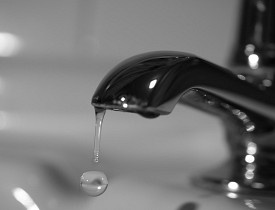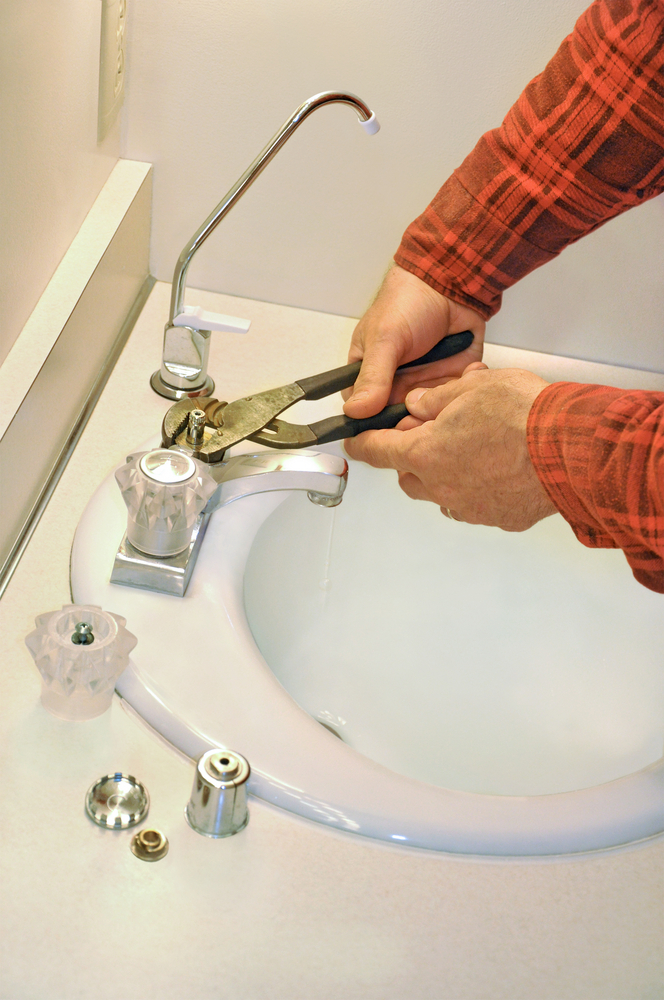My Explanations Behind Resolving a Leaking Faucet
My Explanations Behind Resolving a Leaking Faucet
Blog Article
The article below about What Causes Leaky Faucets & How To Fix Them is immensely entertaining. You should keep reading.

Leaking faucets may feel like a small hassle, yet their influence surpasses simply the inconvenience of the noise. From wasting water to incurring unneeded economic prices and health and wellness dangers, neglecting a dripping tap can bring about various repercussions. In this short article, we'll look into why it's vital to address this typical home concern without delay and properly.
Waste of Water
Ecological Impact
Trickling taps add significantly to water waste. According to the Epa (EPA), a single tap trickling at one drip per secondly can squander more than 3,000 gallons of water per year. This not only pressures water sources but likewise affects ecosystems and wildlife dependent on them.
Financial Costs
Enhanced Water Costs
Past the environmental impact, dripping faucets can pump up water bills substantially. The accumulated wastefulness in time translates right into higher utility expenditures, which can have been prevented with prompt repair services.
Potential Home Damage
Additionally, extended leaking can cause damage to fixtures and surface areas bordering the faucet. Water accumulation can cause staining, corrosion, and even structural problems if left unattended, resulting in added repair work expenses.
Wellness Worries
Mold and Mildew Growth
The constant presence of moisture from a leaking tap develops an excellent environment for mold and mold growth. These fungi not only jeopardize interior air top quality but additionally position health and wellness risks, especially for people with respiratory system conditions or allergies.
Waterborne Illness
Stationary water in dripping faucets can end up being a breeding place for bacteria and other microorganisms, enhancing the danger of waterborne illness. Impurities such as Legionella microorganisms prosper in stationary water, possibly bring about significant ailments when consumed or inhaled.
DIY vs. Specialist Repair service
Benefits and drawbacks of DIY Repair Work
While some might attempt to deal with a leaking faucet themselves, DIY repair work include their very own collection of difficulties. Without correct expertise and tools, do it yourself efforts can exacerbate the concern or result in insufficient repair services, extending the trouble.
Benefits of Working With a Professional Plumber
Employing an expert plumber makes certain that the underlying source of the dripping tap is addressed efficiently. Plumbers possess the proficiency and equipment to diagnose and repair faucet issues efficiently, saving time and minimizing the risk of further damages.
Step-by-Step Overview to Repairing a Dripping Faucet
Devices Called for
Before attempting to fix a trickling tap, collect the needed tools, consisting of an adjustable wrench, screwdrivers, substitute parts (such as washing machines or cartridges), and plumber's tape.
Typical Tap Issues and Their Solutions
Determine the type of tap and the specific problem causing the drip. Typical problems consist of worn-out washers, rusty valve seats, or malfunctioning O-rings. Refer to producer guidelines or online tutorials for step-by-step advice on repair services.
Safety nets
Regular Maintenance Tips
To avoid leaking taps, execute routine maintenance such as cleaning aerators, checking for leakages, and replacing worn-out parts promptly. Additionally, think about setting up water-saving tools or upgrading to a lot more efficient components.
Value of Prompt Repair Works
Attending to dripping faucets as quickly as they're noticed stops further water waste and possible damage, inevitably saving both water and cash over time.
Impact on Residential Property Value
Perception of Well-Maintained Property
Keeping a building in good condition, including addressing maintenance concerns like dripping taps, enhances its viewed worth and desirability among possible buyers or renters.
Impact on Resale Worth
Properties with well-maintained plumbing components, consisting of taps, command greater resale values in the real estate market. Dealing with leaking faucets can contribute to a favorable impression during residential property assessments and arrangements.
Ecological Obligation
Private Contribution to Conservation
Taking responsibility for fixing trickling taps lines up with broader efforts toward water preservation and ecological sustainability. Every individual's activities jointly make a considerable impact on preserving valuable resources.
Lasting Living Practices
By focusing on prompt repairs and adopting water-saving practices, individuals contribute to sustainable living techniques that profit both existing and future generations.
Final thought
Attending to a leaking faucet exceeds simple convenience; it's an important action towards saving water, reducing economic expenses, and protecting health and building. Whether with DIY fixings or expert help, taking action to deal with dripping taps is a small yet impactful method to promote accountable stewardship of sources and add to a healthier, more lasting future.
Most Common Reasons for a Leaky Faucet and How to Stop the Drip
Whether it’s your kitchen faucet leaking or a bathroom faucet leaking, one leaky faucet can waste anywhere from three to 30 gallons of water every single day. If the constant drip-drip-drip doesn’t get your attention, your water bill will. The good news is that, by following a few simple steps, chances are pretty good you can fix the problem yourself.
Why is it dripping?
Before you start taking things apart, let’s break down some of the most common causes of a leaky faucet.
Bad O-ring.
A cartridge is a valve that controls the flow of water into the faucet spout. On cartridge faucets there’s an O-ring—the little disc attached to the stem screw that holds the faucet handle in place. If it’s loose or worn-out, it can cause your sink handle to leak. Of course, the cartridge itself could be worn out. If that’s the case, make sure you replace it with the exact same kind.
Corroded valve seat.
The valve seat connects the faucet and the spout. If the leak seems to be coming from the spout, it might be because a buildup of water sediment has corroded the valve seat.
Worn-out washers or seals.
A leaky spout could be caused by a bad washer that rests against the valve seat. It’s just a matter of time before friction takes its toll. It could also be the wrong size washer or one that’s been installed incorrectly. Water sediments can also corrode inlet and outlet seals.
Water pressure.
If the faucet only drips now and then, or when you turn the handles a certain way, you should probably check your home’s water pressure.
Loose or broken parts.
The adjusting ring and packing nuts in the stream screw can become loose over time, causing your sink handle to leak. Try tightening or replacing the packing nut. If the leak is coming from the pipes underneath the sink, you probably have a broken pipe or fitting. If that’s the case, you should definitely call a plumber.
Know your faucet.
Faucets come in a variety of types. Each one has its own assembly—and its own possible causes of leaks. Learning about the four most common kinds of faucets will help you know how to take them apart and make any repairs.
How to stop a leaky faucet
Fixing that leaky faucet doesn’t have to take a lot of time, money, or expertise. It’s usually a simple matter of replacing a worn-out washer or gasket, a loose O ring, or another part. Chances are really good you can do this yourself if you follow these simple steps.
Shut off the water.
Before you tackle the faucet, cut off the water supply to the sink. There should be one valve for hot and one for cold. Hand-turn them clockwise with your hands till they close. If there are no valves under the sink, head to the basement and shut off the main water supply to the house. Then turn on the faucet until it empties out the water that’s still in the line and you’re ready to start. It’s a good idea to cover the sink drain with a plug or a rag so you don’t lose any small pieces and parts while you’re working.

Do you enjoy reading about Leaky Faucets: Why They Happen & What to Do About Them? Give feedback below. We will be glad to listen to your opinions about this review. Hoping that you come back again in the near future. Remember to pause to share this post if you appreciated it. Thank you for your time invested reading it.
Report this page